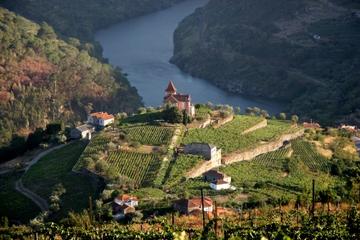
The Douro region in Northeast Portugal is near the border with Spain. Even with the advent of modern civilization, this area is characterized by a sort of frontier spirit that tenaciously preserves a traditional way of life handed down through many, many years.
Thinly populated and remote, the Douro is not unlike Galicia in Spain in that its people speak a dialect that is markedly different than the rest of the country; in the Douro, it is closer to Latin vulgate than Portuguese. Along with speaking a traditional language, pottery and weaving are still important cottage industries. Long-held folk practices include a dance with wooden staves called the Dance of the Pauliteiros, which takes place on the third Sunday of August, during the Feast of Saint Barbara. Curiously, this dance is less related to Saint Barbara than it is to Roman martial pomp – the Dance of the Pauliteiros is an outgrowth of the old Roman sword dances.
Notable ruins in the town of Miranda do Douro include the watchtower of the Miranda do Douro castle and the Baroque courtyard left behind from the long-since-destroyed Archbishop’s palace. The city’s cathedral is also of interest; it features a magnificent marble high altar as well as a 19th century ex-voto centered around a piece called “Infant Jesus in a Top Hat.”
About 17 kilometers (11 miles) northwest of the town is the village of Caçarelhos. Here are large marble and alabaster quarries and beautiful caves, making it a popular destination for professional and amateur spelunkers alike. Another village, Vimioso, has an old church, quaint town square, Roman bridges and its own ruined, 12th century castle.